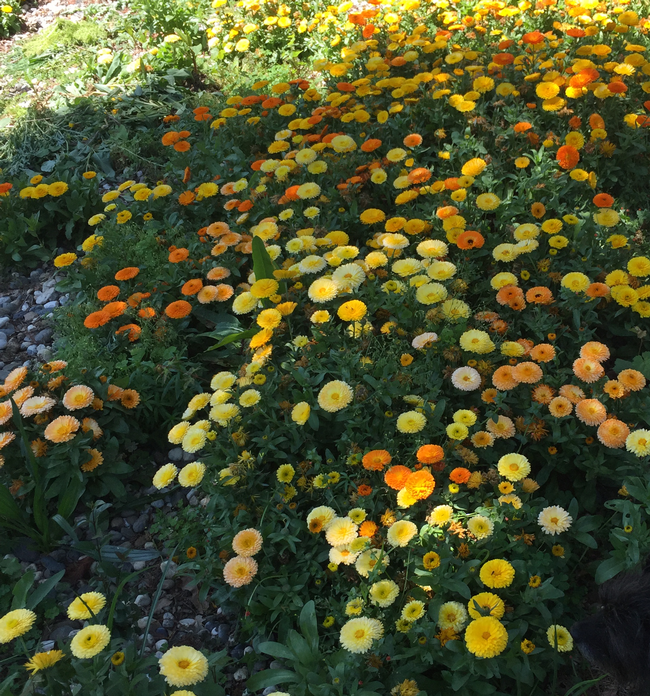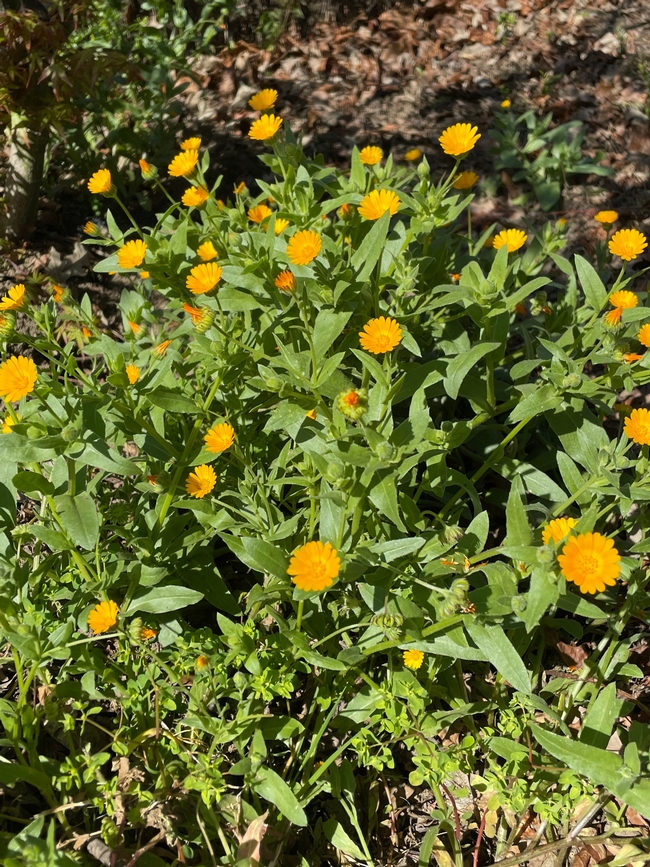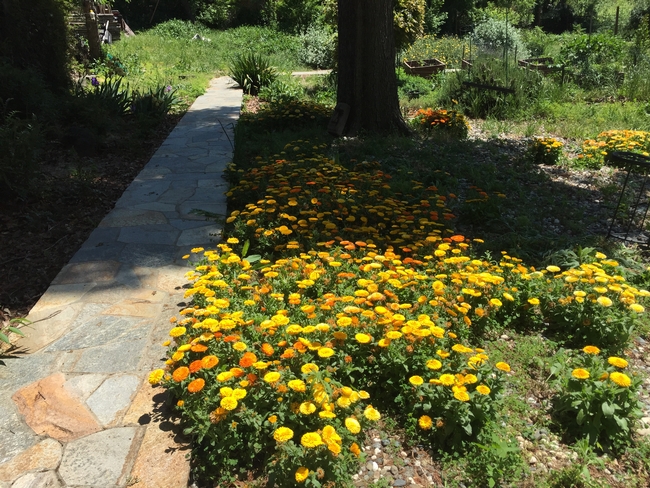I know that this might sound strange to you, but today, March 20th, the first full day of spring, I was admiring the various types of weeds and wildflowers that are popping up in my garden. It reminds me of the quote, “Weeds are flowers too, once you get to know them.”-A.A.Milne. I was admiring the various colors and types of plants that are popping up in the sun-drenched part of my garden, such as the dead nettle (Lamium purpureum), field marigolds (Calendula arvensis), miner's lettuce (Claytonia perfoliate), musky stork's bill (Erodium moschatum), a species of filaree, and of course, what excursion into weeds and wildflowers wouldn't be appropriate without mentioning the California poppy (Eschscholzia californica), which, of course, is a beautiful plant, but could be considered a weed to many.
The wild calendula in my garden developed as a surprise. Several years ago, I bought a package of calendula seeds - most likely Calendula officinalis. They produce gorgeous, low-to-the-ground plants with attractive three-inch orange and yellow flowers. I did not buy them with the intention of using them as ground cover, but they became ground cover! Several years later, those plants still reappeared since they could be self-sown.
To my surprise, I noticed that one part of my garden had these much taller daisy-like plants that I discovered were a different type of calendula, often called field marigolds, Calendula arvensis. I'm not sure how Calendula arvensis came to my garden. I have purchased several packs of wildflower seeds over the years. Perhaps it was brought into my garden by one of those wildflower mixes.
Since we live in a Mediterranean-type climate, this should not come as a surprise. These plants are often found in fields in the Tuscan region, especially among olive groves. The blooms are much smaller than the calendula that I started from seed. I enjoy how they open every morning, follow the sun, and close in the evenings. Often, visitors to my garden confuse them with blooming mustard plants, commonly seen here in the Valley at this time of year as cover crops between the grape vines.
What is also spectacular about both of these calendulas is that they seem to be very drought-tolerant. I don't use much, if any, water for either and am constantly rewarded with a multitude of blooms. The more cultivated calendula continues to bloom well into the summer with infrequent watering. The wild calendula gets “leggy” after a while. I pull them up by late April, amend the soil, and plant my sunflower seeds. It's a great spot in my garden to keep a continuous pop of color.
Napa Master Gardeners are available to answer garden questions by email: mastergardeners@countyofnapa.org. or phone at 707-253-4143. Volunteers will get back to you after they research answers to your questions.
Visit our website: napamg.ucanr.edu to find answers to all of your horticultural questions.
Photo credits: Lonnie Clark


